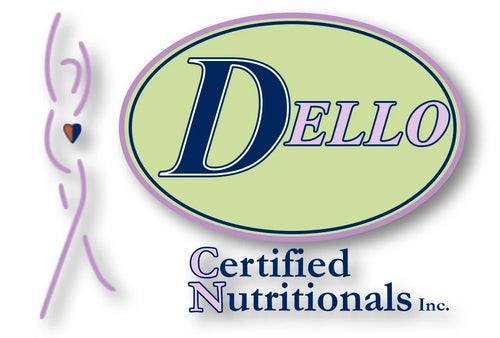TIPS FOR A HEALTHY HEART
According to the Mayo clinic the Mediterranean diet is heart Healthy.
Avoid: Cigarette smoke (even 2nd hand), sugar, refined and processed foods, hydrogenated oils, safflower, sunflower, corn oils, soft drinks, alcohol, processed meats, being overweight. Do not consume large amounts of licorice as this can lower levels of magnesium and potassium.
Suggestions and goals
The basic idea of this eating program is to increase consumption of omega 3 fats, fiber, and whole natural foods. Eliminate sugar, refined or processed foods, and hydrogenated oils. Drink plenty of pure water.
For more information call now! 516-365-1222
Tips for a Healthier Heart
Use food as medicine to protect yourself from heart disease.
Atherosclerosis kills some 500,000 Americans annually. It begins early in life; eventually plaque starts to block blood flow, and cause heart attacks or strokes.
The good news is you can reduce your risk by controlling and assessing the risk factors and taking preventive measures in your lifestyle.
- Start with a meal: “Plan for Good Health.”
- Get the correct tests done in your doctors office.
- Exercise more.
- Stop smoking.
- Reduce your stress level.
- Control blood sugar levels.
- Take supplements.
- Drink herb teas.
- Chill out (Relax).
- No hydrogenated oils.
Why Our Arteries Become Clogged As We Age

Artwork of a human heart showing narrowing of the coronary arteries due to atherosclerosis on the artery wall. The narrowing causes abnormal clotting, which blocks the vessel and starves the heart muscle of blood, causing a heart attack.
The scientific literature reveals that atherosclerosis is associated with high blood levels of homocysteine, C-reactive protein, insulin, iron, low-density lipoprotein (LDL), and triglycerides, along with low levels of high-density lipoprotein (HDL) and testosterone. Optimizing blood levels of these substances can dramatically reduce heart attack and stroke risk.3-14
Prescribing a “statin” drug is what today’s doctors typically do to prevent and treat coronary atherosclerosis. Cholesterol and LDL, however, are only partial players in the atherosclerosis process.

How it works
Atherosclerosis is so common in older adults that some experts used to think it was part of normal aging. An alternative view is that atherosclerosis is a disease process that takes advantage of changes that occur within the aging artery.
The vascular aging process and atherosclerotic process influence each other and become intertwined as we age. The more severe vascular aging is, the easier it is for atherosclerosis to take hold. The more severe atherosclerosis is, the greater its impact on diseases associated with vascular aging, such as stroke and heart attack. Thus, it appears that with advancing age, atherosclerosis and the aging process combine forces.
An often-used analogy for atherosclerosis is a “clogged pipe.” This misguided perception either leads to bypass surgery or a procedure in which the blocked coronary artery is forced opened with a balloon catheter (angioplasty) and a stent is implanted to keep the artery open. While these surgical procedures have become necessary for many people, the “clogged pipe” analogy is an inaccurate way to view the process of atherosclerosis.
Atherosclerosis begins with changes in endothelial cell function that cause white blood cells moving through the blood to stick to the endothelium instead of flowing by normally. The endothelium becomes weakened, which allows blood cells and toxic substances circulating in the blood to pass through the endothelium and enter the artery’s sub-endothelial compartment. Lipid or fat cell-like substances in the blood, such as LDL and triglycerides, then accumulate in this area.
The Arterial Wall Under Attack
High blood pressure, elevated LDL and triglycerides, low HDL, cigarette smoking, diabetes, obesity, and lack of exercise contribute to endothelial dysfunction and the subsequent development of atherosclerosis.
Additional endothelial-damaging factors include excess levels of glucose, insulin, iron, homocysteine, fibrinogen, and C-reactive protein, as well as low HDL and free testosterone (in men).
Homocysteine is particularly dangerous because it can induce the initial injury to the endothelium. Homocysteine then facilitates oxidation of the fat/LDL that accumulates beneath the damaged endothelium, and finally contributes to the abnormal accumulation of blood components around the atherosclerotic lesion.
Fibrinogen is a clotting factor that accumulates at the site of the endothelial lesion. Fibrinogen may contribute to plaque buildup or participate in blood clot-induced blockage of an artery after an unstable atherosclerotic plaque ruptures.
Glucose at even high-normal levels may accelerate the glycation process that causes arterial stiffening, while high-normal fasting insulin inflicts direct damage to the endothelium.
Maintaining Vascular Health During Aging
Endothelial cells line the arteries, veins, arterioles, and capillaries of the vascular system. Twenty years ago, the endothelium was seen as a relatively inert structure that played no active role in vascular function. Since then, however, research has shown that the endothelium is dynamic and participates in vital aspects of arterial structure and function.
 Cross-section of an artery
Cross-section of an artery
demonstrating plaque.
